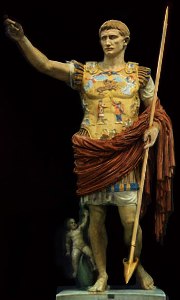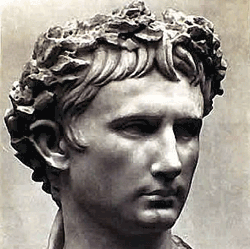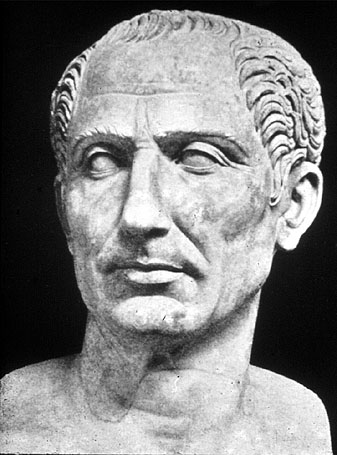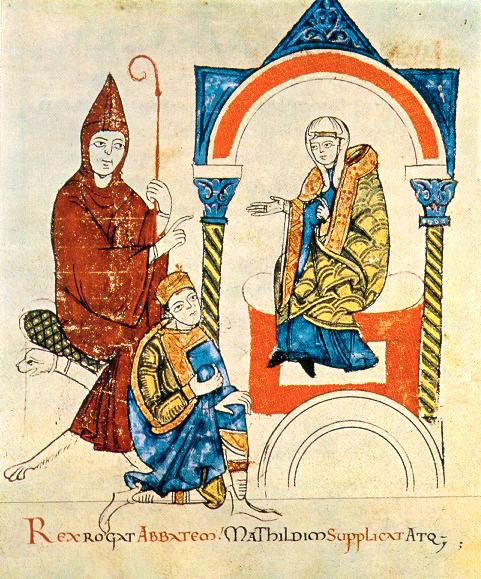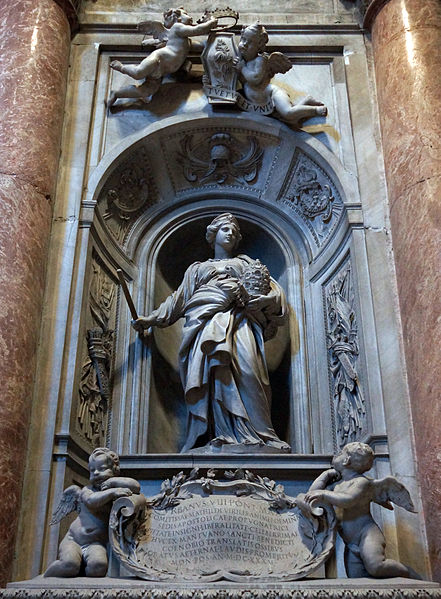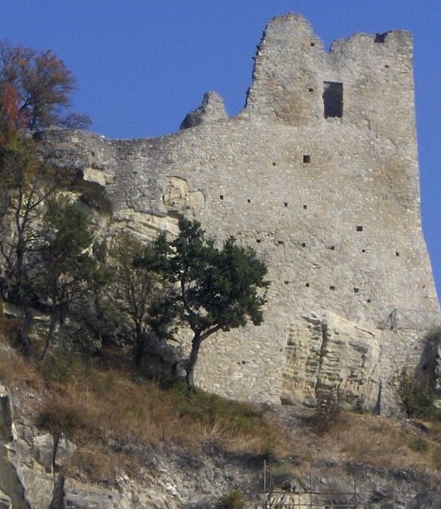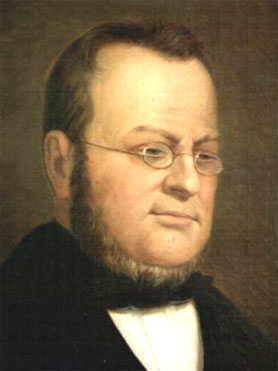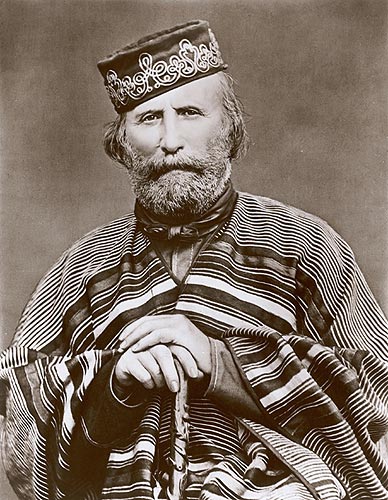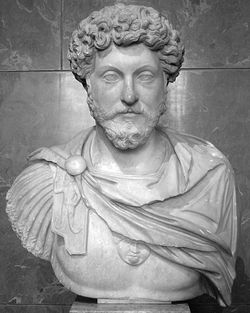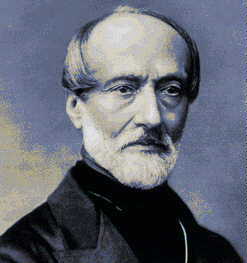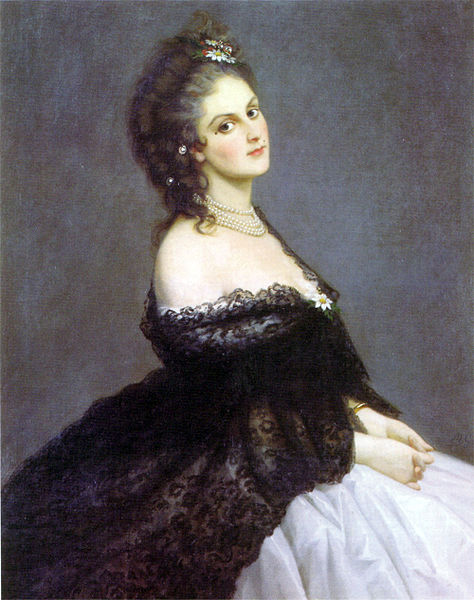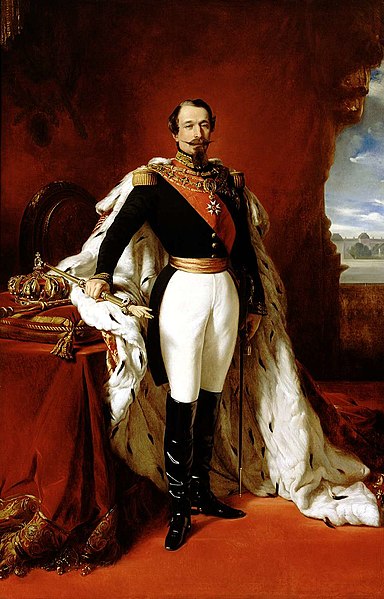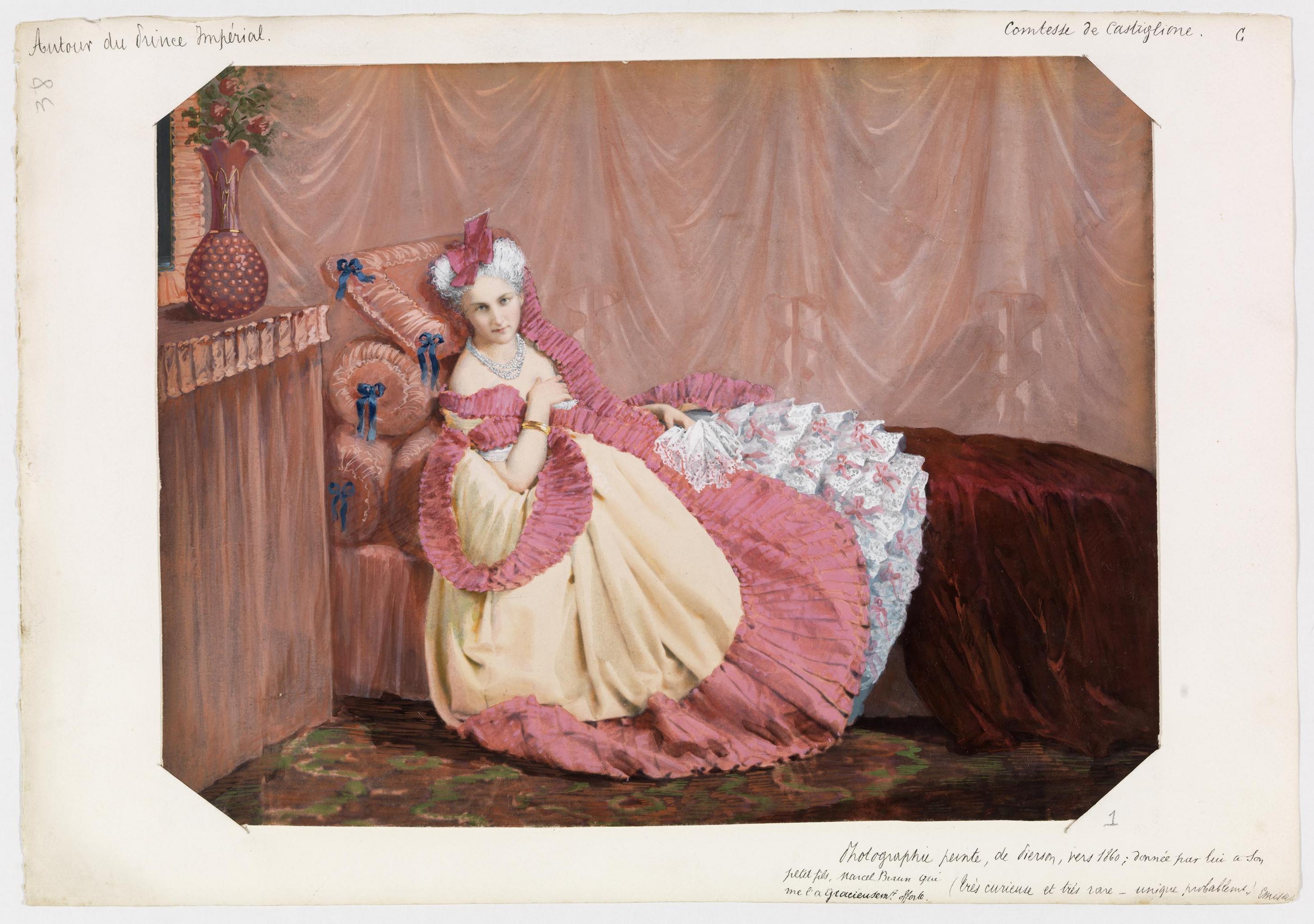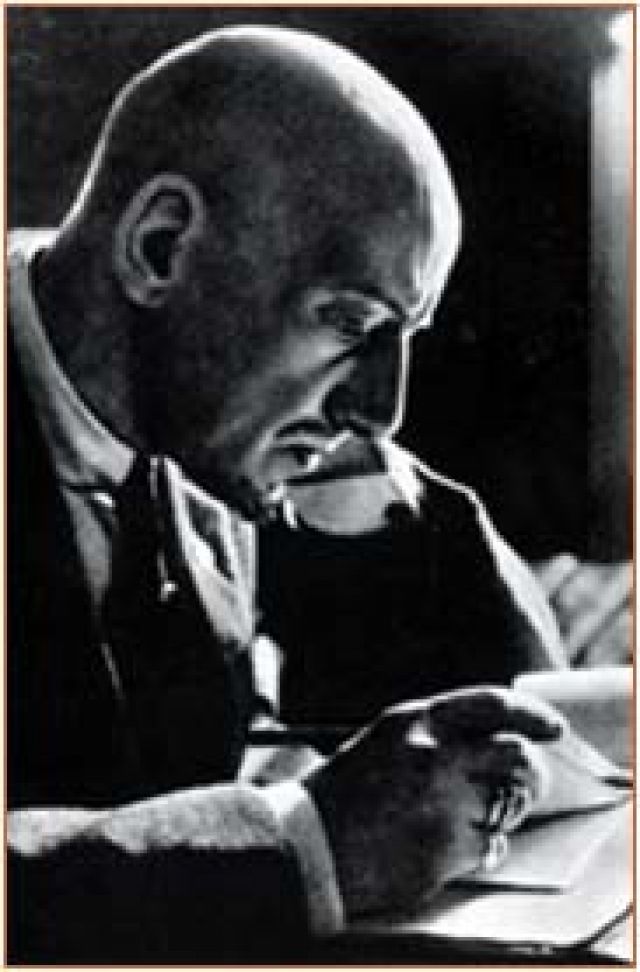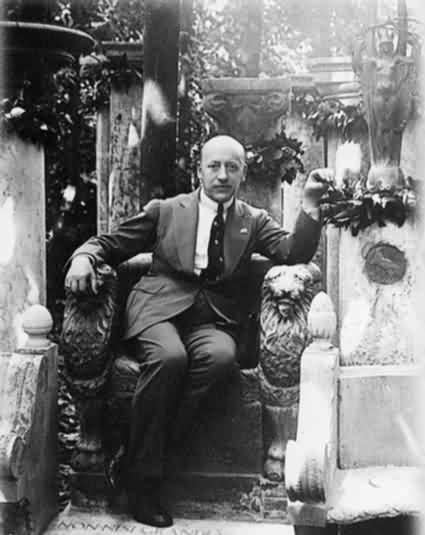The first Emperor of the Roman Empire, Augustus – born Gaius Octavius – was the great nephew and adopted son of Julius Caesar. As sole Emperor, he ruled for 41 years and built Rome into a strong sovereignty, establishing a standardized government, border security, postal service, and currency; creating a police and fire department, and a legal system; building roads, bridges, aqueducts, and many buildings; and restoring temples. Horace, Livy, Ovid, and Virgil formed the Golden Age of Roman Literature under the reign of Augustus, and his reign was the beginning of the Pax Romana (Peace of Rome), an era that signifies the prime of the Roman Empire; it ended in 180 with the death of Marcus Aurelius.
Octavius was born in Rome and was four years old when his father died. His mother, Caesar’s niece, supervised his education in language and philosophy; and at 12 years old, Octavius made his first public speech – the eulogy at his grandmother’s (Caesar’s sister) funeral. He served as a Roman priest, celebrated Caesar’s victorious return to Rome in 46, and endured several hardships while traveling to Hispania to assist Caesar in a battle with Pompey’s sons. Some historians note that it was the determination of Octavius to join Caesar in battle that prompted Caesar to make Octavius his heir. Octavius was in Apollonia (in Albania) when he heard about Caesar’s murder, but didn’t know he was Caesar’s heir until he reached Brundisium (Brindisi in Puglia). There, Octavius was able to gain the support of Roman soldiers and financial backing and made his way to Rome.
